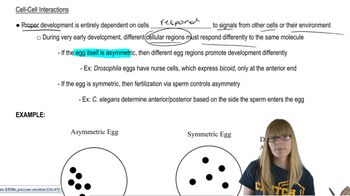From a piece of blank paper, cut out three sets of four cigar-shaped structures (a total of 12 structures). These will represent chromatids. Be sure each member of a set of four chromatids has the same length and girth. In set one, label two chromatids 'A' and two chromatids 'a.' Cut each of these chromatids about halfway across near their midpoint and slide the two 'A' chromatids together at the cuts to form a single set of attached sister chromatids. Do the same for the 'a' chromatids. In the second set of four chromatids, label two 'B' and two 'b.' Cut and slide these together as you did for the first set, joining the 'B' chromatids together and the 'b' chromatids together. Repeat this process for the third set of chromatids, labeling them as 'D' and 'd.' You now have models for three pairs of homologous chromosomes, for a total of six chromosomes. Combining your work in steps (f) through (m), provide a written explanation of the connection between meiotic cell division and Mendel's law of independent assortment.
Table of contents
- 1. Introduction to Genetics51m
- 2. Mendel's Laws of Inheritance3h 37m
- 3. Extensions to Mendelian Inheritance2h 41m
- 4. Genetic Mapping and Linkage2h 28m
- 5. Genetics of Bacteria and Viruses1h 21m
- 6. Chromosomal Variation1h 48m
- 7. DNA and Chromosome Structure56m
- 8. DNA Replication1h 10m
- 9. Mitosis and Meiosis1h 34m
- 10. Transcription1h 0m
- 11. Translation58m
- 12. Gene Regulation in Prokaryotes1h 19m
- 13. Gene Regulation in Eukaryotes44m
- 14. Genetic Control of Development44m
- 15. Genomes and Genomics1h 50m
- 16. Transposable Elements47m
- 17. Mutation, Repair, and Recombination1h 6m
- 18. Molecular Genetic Tools19m
- 19. Cancer Genetics29m
- 20. Quantitative Genetics1h 26m
- 21. Population Genetics50m
- 22. Evolutionary Genetics29m
9. Mitosis and Meiosis
Mitosis
Problem 32j
Textbook Question
From a piece of blank paper, cut out three sets of four cigar-shaped structures (a total of 12 structures). These will represent chromatids. Be sure each member of a set of four chromatids has the same length and girth. In set one, label two chromatids 'A' and two chromatids 'a.' Cut each of these chromatids about halfway across near their midpoint and slide the two 'A' chromatids together at the cuts to form a single set of attached sister chromatids. Do the same for the 'a' chromatids. In the second set of four chromatids, label two 'B' and two 'b.' Cut and slide these together as you did for the first set, joining the 'B' chromatids together and the 'b' chromatids together. Repeat this process for the third set of chromatids, labeling them as 'D' and 'd.' You now have models for three pairs of homologous chromosomes, for a total of six chromosomes. Are there any alternative alignments of the chromosomes for this cell-division stage? Explain.
 Verified step by step guidance
Verified step by step guidance1
Understand the setup: You have created three pairs of homologous chromosomes, each consisting of two sister chromatids. The pairs are labeled as 'A/a,' 'B/b,' and 'D/d.' These represent homologous chromosomes, where each pair contains one chromosome from each parent.
Recall the concept of independent assortment: During metaphase I of meiosis, homologous chromosomes align randomly at the metaphase plate. This means that the orientation of each homologous pair is independent of the others, leading to different possible alignments.
Determine the number of possible alignments: For each homologous pair, there are two possible orientations (e.g., 'A' on one side and 'a' on the other, or vice versa). Since there are three pairs of homologous chromosomes, the total number of alignments can be calculated as 2^n, where n is the number of homologous pairs.
Apply the formula: Substitute n = 3 into the formula 2^n to calculate the total number of possible alignments. This will give you the number of unique combinations of chromosome orientations during metaphase I.
Explain the significance: These alternative alignments contribute to genetic diversity in gametes due to the random distribution of maternal and paternal chromosomes. This is one of the key mechanisms of genetic variation in sexually reproducing organisms.
 Verified video answer for a similar problem:
Verified video answer for a similar problem:This video solution was recommended by our tutors as helpful for the problem above
Video duration:
3mPlay a video:
Was this helpful?
Key Concepts
Here are the essential concepts you must grasp in order to answer the question correctly.
Chromatids and Chromosomes
Chromatids are the two identical halves of a replicated chromosome, joined together at a region called the centromere. During cell division, specifically in mitosis and meiosis, chromatids separate to ensure that each daughter cell receives an identical set of chromosomes. Understanding the structure and function of chromatids is crucial for analyzing how genetic material is distributed during cell division.
Recommended video:
Guided course

Chromatin
Homologous Chromosomes
Homologous chromosomes are pairs of chromosomes that have the same structure and gene sequence but may carry different alleles. In the context of meiosis, these chromosomes align and can exchange genetic material through a process called crossing over, which increases genetic diversity. Recognizing the role of homologous chromosomes is essential for understanding genetic variation and the mechanisms of inheritance.
Recommended video:
Guided course

Chromosome Structure
Cell Division and Alignment
Cell division involves the processes of mitosis and meiosis, where chromosomes align at the cell's equatorial plane before being separated into daughter cells. The alignment of chromosomes can vary, particularly during meiosis, where independent assortment can lead to different combinations of chromosomes in gametes. This concept is vital for exploring alternative alignments and their implications for genetic diversity.
Recommended video:
Guided course

Cell-cell interactions
Related Videos
Related Practice
Textbook Question
403
views


